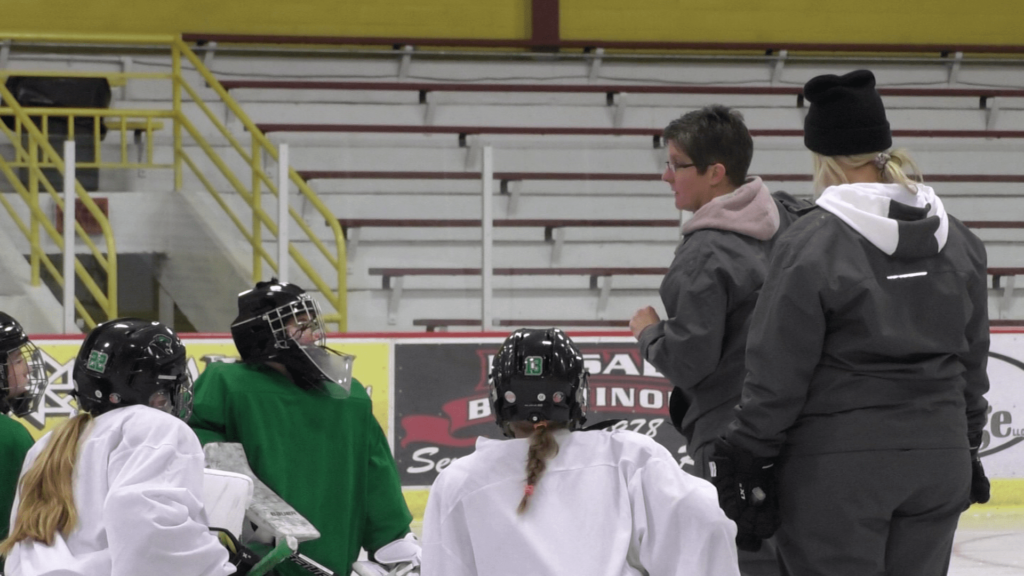My Recommendations

Feedback is a gift.
Giving feedback is hard.
Having led performance feedback to dozens (if not hundreds) of people I’ve managed in business, I recognize it is one of the most challenging interactions to conduct in my career. At the same time, I was taught how to take it seriously and learned many of the best practices to ensure a positive outcome from the process for both parties.
It is pretty clear from the parent meeting at the 16/17 Girls camp (and the letter that accompanied the feedback/rating letter) that USA Hockey wants to make no doubt that they are providing a variety of different levels of feedback for each player at the national camps. The details of this feedback were clearly explained in Part I on this topic.
And it is important to recognize that they really do care about giving feedback – because they have dedicated time and resources to the process. I also wanted to also acknowledge that is takes a non-trivial amount of effort to provide detailed feedback to about 400 players across 4 major camps each summer.

At the same time, I’ve spent a ton of time thinking about this topic trying to figure out why almost everyone I have spoken with is disappointed with the USA Hockey Girls National Camp selection and feedback process. And here is what I came up with…
At the end of the day, the current process does not solve the unmet need of the players – which is to have actionable direction on their highest priority development areas. This is because the robustness of the feedback is not commensurate with the level of commitment and investment the players put into making, preparing and attending the camp.
And my reason for this is the following:
The feedback is too generic. For almost all the players, it’s just too simplistic/superficial without personalized examples and not actionable enough.

Here are my recommendations:
- Standardize a More Robust Process – The coaches should go through a training session on how the process works and what the expectations are from the coach on the process, content & delivery. All players should receive player-specific information using a common format, but with player-specific examples in the review. While the coaches should have flexibility to adapt the process to their style, each performance review (in addition to the attribute ratings mentioned in Part I) would require the feedback to include each of the following….
- Include Player-Specific Key Statistics (e.g. pass completion rates or turnover rates). Nothing is more powerful than data. Being able to show a player how they compared on key attributes compared to their peers makes things much clearer. This became quite evident to me in my analysis of the 16/17 Camp forwards and defenders.
- Support with Player-Specific Video Clips – showing a player exactly what they do well and how/when they make mistakes provides “hard-to-argue” credibility to the stats and the coach’s feedback. This would likely use a video analytics system like Instat/Hudl so each player’s shifts could be coded.
- Prioritize Key Areas to Focus On – Darryl Belfry consistently talks about High Frequency – Low Success Rate Situations. Video and statistical analysis will surface these situations. Then a coach should be using them to focus on a limited number of these game patterns to prioritize (3-5) situations/skills for a player to work on.
These four recommendations would require a significantly greater amount of time and resources than the current effort being done at the USA Hockey girls camps. There may not be time to aggregate everything during that week. But the feedback session does not need to occur at the camp. It can be done a week or two after the camp via a video-call. What matters most is that the players are getting their needs met as to where to focus and improve as a player. Ideally, there would be someone in leadership who was solely responsible for player development and not directly associated with the selections for the U18 camp or team. I know it can be done, because I have seen first-hand more robust feedback processes on the boys side at both the USA Hockey and junior hockey levels.
Final Thoughts
The best organizations focus relentlessly on their customers. One of the biggest ways to ensure these organizations are meeting the needs of their customers is to ask them for feedback. Specifically their overall satisfaction with a question like “Would you recommend [product/service] to a friend or colleague?” followed by “Why?”. In my few years interacting with USA Hockey both as a coach and a parent, I have never been asked for my feedback on the programs I’ve been been engaged with. In essence, USA Hockey has a monopoly on the national team programs so it is understandable that they may not need to be as customer-centric as an Amazon or an Apple. But, if leadership for USA Hockey female national camps wants to continuously improve their program, just like their players do, it would be great if they solicited their own feedback on areas they can improve as an organization. Who knows…maybe getting the gift of feedback on themselves may translate to improved performance on the ice?
Feel free to send feedback on our posts or Champs App to [email protected]

